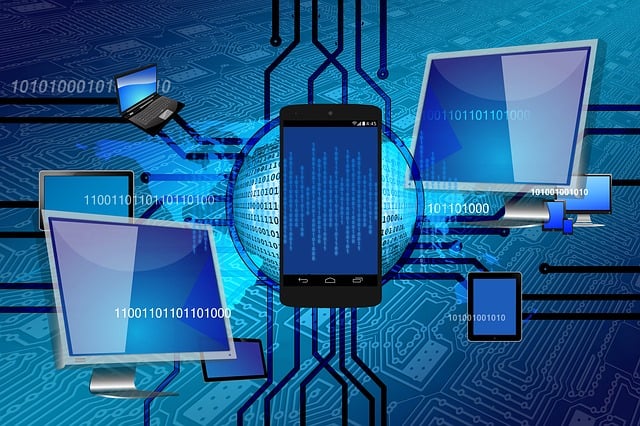The Future of Generative AI in Edtech
Infusing AI into edtech will open a new world of teaching and learning opportunities

The EdExec Summit is a new event from Tech & Learning that brings together senior executives from companies serving the K-12 industry for a three-day networking conference dedicated to the business of education. Presenter Adam Garry, former Senior Director of Education Strategy with Dell, discusses the future of generative AI in K-12 edtech.
“Since the pandemic, we have shifted the nature of how technology is used in schools,” says Garry. “Future Source data shows that 98% of school districts have a one-to-one system for their students. From one watershed moment to the next and current one—generative AI—we have changed how we utilize technology in the education process as tools for both learning and operations.”
This enhancement of already notable and successful personalized learning tech can go a step farther.
“Generative AI could generate unique problem sets or reading materials adapted to each student's skill level,” Garry says. “It could also be used to simulate realistic virtual experiences or make topics more relatable and engaging.
For some students, this type of increased accessibility can be a learning life saver.
“Importantly, AI can help in the early detection of learning difficulties, providing timely interventions or acting as a personal assistant to the teacher, reducing the time-consuming tasks so they can focus on supporting learners,” says Garry. “The ability to create performance tasks aligned to rubrics and generate multiple examples for students to learn from will be a game changer for assessment.”
Educating Edtech Customers About Generative AI
An important step in the adoption of the latest tech to hit the education realm is to make sure those most affected understand what it is and how it can help.
Tools and ideas to transform education. Sign up below.
“At Dell Technologies, we helped our district partners accomplish this education piece via eight learning modules (free to school systems across North America) to explore opportunities and challenges presented by the adoption of AI,” says Garry. “These include: Understanding the Basics, Various AI Models, Prompt Engineering, AI-Powered Tools and Resources, Integrity, Ethics, and Privacy, Learning, Teaching, and Digital Citizenship.”
Garry suggests focusing on identifying misinformation and building the skills to help with these new digital literacies.
Generative AI Edtech & Administrative Tasks
At a recent Dell Technologies Innovation Summit, one of the school districts brought a problem forward, asking for help building a new elementary school schedule to allow for more professional learning time. After the foundational elements were developed, ChatGPT was used to build a schedule, ensuring consideration for concepts and people. The school system left with a plan that was 80% complete in about three hours.
Another school district in Virginia led its entire leadership team and superintendent through the basics and prompt engineering sessions. They developed a memo for all principals with key considerations for their stakeholders when using generative AI. The district’s new plan will enable them to work in short sprints as they roll out generative AI to accommodate the still-evolving technology.
“Generative AI will likely revolutionize teaching and learning,” says Garry. “We could see more personalized learning experiences where AI tailors the curriculum to individual student’s strengths, weaknesses, and pace. The possibilities are endless, and I am barely scratching the surface of what is possible.”
4 Ways to Integrate Generative AI into Edtech Products
- Personalization - Implement AI algorithms that allow students to practice voice and choice and share resources that will empower the learner. It should also be applied to professional learning.
- Support for Educators - Develop tools that allow the educator to utilize curiosity at every step of the process. The tools will help with automating and completely transforming tasks.
- Enhanced Interactions - Use AI to create realistic simulations or virtual tutors that can help engagingly explain complex concepts. Use AI as a tutor with the right prompts to drive personalized learning.
- Data Analysis - Use AI for predictive analytics to identify trends in student performance and areas in which intervention may be required, but more importantly, allow the educator to ask questions of the data and connect the answers to solutions. This will be one of the biggest areas of transformation if done correctly.
We need to ensure the use of AI is transparent, secure, and respects privacy, says Garry. “School districts should draft memos to companies when products are updated with generative AI and ask what data sources are informing the model, and where data being gathered will go, and how it will be used.”
6 Impacts of AI on the Teaching and Learning Process
AI has the potential to impact the teaching and learning process in various ways:
- Efficiency—Automate administrative tasks, allowing teachers more time to engage with students.
- Assessment—Help the teachers create performance tasks, build rubrics, and score the tasks. This will allow the teacher to provide more targeted feedback to the learner.
- Personalization—Customize learning experiences and empower the learner with voice and choice.
- Enhanced Understanding—Provide more interactive and immersive learning experiences.
- Early Intervention—AI can help identify students that are struggling and provide targeted support.
- Be a Curiosity Engine—Drive curiosity as it will allow the learner to explore many topics from various perspectives.
Sascha has nearly two decades of experience as a freelance journalist writing for national magazines, including The Washington Post, LA Times, Christian Science Monitor, National Geographic Traveler, and others. She writes about education, travel and culinary topics.

